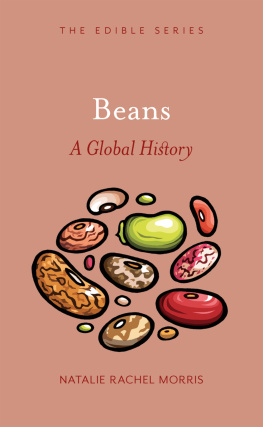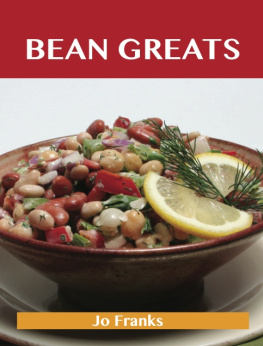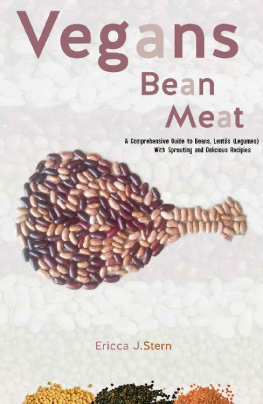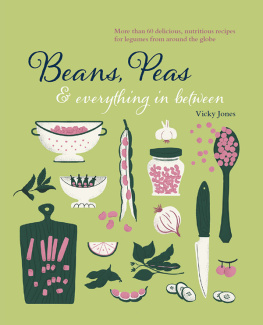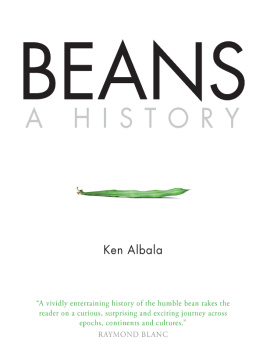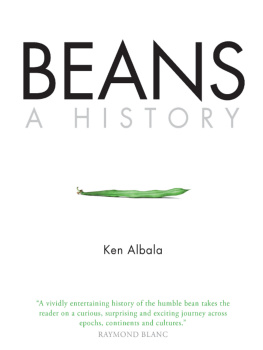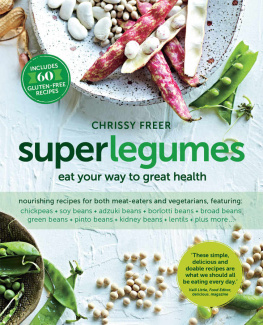BEANS

Edible
Series Editor: Andrew F. Smith
EDIBLE is a revolutionary series of books dedicated to food and drink that explores the rich history of cuisine. Each book reveals the global history and culture of one type of food or beverage.
Already published
Apple Erika Janik, Avocado Jeff Miller, Banana Lorna Piatti-Farnell, Barbecue Jonathan Deutsch and Megan J. Elias, Beans Natalie Rachel Morris, Beef Lorna Piatti-Farnell, Beer Gavin D. Smith, Berries Heather Arndt Anderson, Biscuits and Cookies Anastasia Edwards, Brandy Becky Sue Epstein, Bread William Rubel, Cabbage Meg Muckenhoupt, Cake Nicola Humble, Caviar Nichola Fletcher, Champagne Becky Sue Epstein, Cheese Andrew Dalby, Chillies Heather Arndt Anderson, Chocolate Sarah Moss and Alexander Badenoch, Cocktails Joseph M. Carlin, Coffee Jonathan Morris, Corn Michael Owen Jones, Curry Colleen Taylor Sen, Dates Nawal Nasrallah, Doughnut Heather Delancey Hunwick, Dumplings Barbara Gallani, Edible Flowers Constance L. Kirker and Mary Newman, Eggs Diane Toops, Fats Michelle Phillipov, Figs David C. Sutton, Game Paula Young Lee, Gin Lesley Jacobs Solmonson, Hamburger Andrew F. Smith, Herbs Gary Allen, Herring Kathy Hunt, Honey Lucy M. Long, Hot Dog Bruce Kraig, Ice Cream Laura B. Weiss, Lamb Brian Yarvin, Lemon Toby Sonneman, Lobster Elisabeth Townsend, Melon Sylvia Lovegren, Milk Hannah Velten, Moonshine Kevin R. Kosar Mushroom Cynthia D. Bertelsen, Mustard Demet Gzey, Nuts Ken Albala, Offal Nina Edwards, Olive Fabrizia Lanza, Onions and Garlic Martha Jay, Oranges Clarissa Hyman, Oyster Carolyn Tillie, Pancake Ken Albala, Pasta and Noodles Kantha Shelke, Pickles Jan Davison, Pie Janet Clarkson Pineapple Kaori OConnor, Pizza Carol Helstosky, Pomegranate Damien Stone, Pork Katharine M. Rogers, Potato Andrew F. Smith, Pudding Jeri Quinzio, Rice Renee Marton, Rum Richard Foss, Salad Judith Weinraub, Salmon Nicolaas Mink, Sandwich Bee Wilson, Sauces Maryann Tebben, Sausage Gary Allen, Seaweed Kaori OConnor, Shrimp Yvette Florio Lane, Soup Janet Clarkson, Spices Fred Czarra, Sugar Andrew F. Smith, Sweets and Candy Laura Mason, Tea Helen Saberi, Tequila Ian Williams, Tomato Clarissa Hyman, Truffle Zachary Nowak, Vodka Patricia Herlihy, Water Ian Miller, Whiskey Kevin R. Kosar, Wine Marc Millon
Beans
A Global History
Natalie Rachel Morris
REAKTION BOOKS
This is for the women of my life: those whove raised me,
mentored me, stood by my side. Together, we rise.
Published by Reaktion Books Ltd
Unit 32, Waterside
4448 Wharf Road
London N1 7UX, UK
www.reaktionbooks.co.uk
First published 2020
Copyright Natalie Rachel Morris 2020
All rights reserved
No part of this publication may be reproduced, stored in a retrieval
system, or transmitted, in any form or by any means, electronic,
mechanical, photocopying, recording or otherwise, without the prior
permission of the publishers
Page References in the Photo Acknowledgements and
Index Match the Printed Edition of this Book.
Printed and bound in India by Replika Press Pvt. Ltd
A catalogue record for this book is available from the British Library
eISBN 978 1 78914 241 9
Contents

Introduction

The story of beans is the age-old narrative of the underdog. In their earliest forms, beans gave our hunter-gatherer ancestors a naturally sweet and crunchy snack that would have been satisfying and satiating during a time in which fire and cooking had yet to be discovered. Our relatives in prehistory knew an honest, laborious life where they shared responsibilities and survival was their priority.
As the world advanced, so did social structure, hierarchy and class. Lentils, favas and garbanzos were among the first beans known to exist and as such were some of the first foods to carry social significance. As cooking facilities became available, beans were abandoned by the rich in favour of meat and left as food for the poor. In Imperial Rome, lentils were an ancient form of packing peanuts, providing a cushion for the Vatican Obelisk as it travelled from Egypt to its new home.
Seen as taboo, beans had more than just meat stacked against them. Early influencers like Pythagoras, the vegetarian geometer, outwardly avoided beans. An apparently close encounter in a bean field led him to ban bean-eating (and bean fields) among his followers. Biblical literature tells us that it was a bowl of lentils for which Esau sold his birthright, inciting an epic family drama. It was often believed that beans were not only difficult to digest but suppressed sexual urges and were even the cause of leprosy. And lest we forget, digestive wind, an early euphemism for you guessed it flatulence, has blemished beans reputation since their beginning.
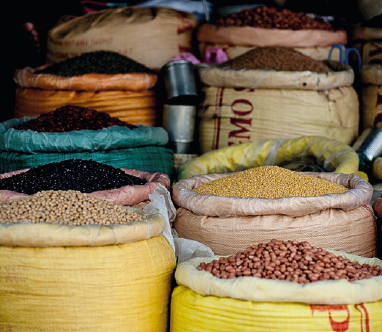
Colourful varieties of bulk beans at a market.
Though today the hearsay narrative has generally been scientifically rectified, beans remain an unsung staple of diets worldwide, tucked into a taco or quietly adding substance to a stew. When people spread the all-American favourite peanut butter, whether crunchy or creamy, across their all-American white bread, most fail to recognize they are savouring a legume. Misunderstood, most beans are not only adding the popular twenty-first-century fad diet favourite of protein to a persons daily diet but are contributing high amounts of fibre and carbohydrates minus the cholesterol and fat calories that can come with meat.
Perhaps most importantly, this dark horse hasnt seen the credit due for undoubtedly its greatest gift to all of humanity: nitrogen. It wasnt until recent years that natural nitrogen sources legumes as cover crops were removed from farming and agriculture. Planting them to feed the soil had been a common practice, reputedly dating almost as far back as the beginning of organized farming itself. It wasnt until their widespread removal after the Second World War that our present-day society began to understand beans most valuable asset.
Among the barrage of inconsistent, unreliable and even downright ridiculous nutritional information and recommendations for ways to eat it, the humble bean has found its way throughout history. Though its true identity is continually mistaken, it has fought through stigmas to earn its place as a sleeper candidate for the role of one of the most important food sources in history.
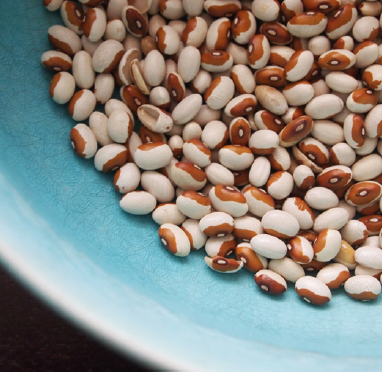
A bowl full of beans of Italian origin.


